Pioneer CT-W505R


The CT-W505R is a stereo double cassette deck manufactured in 1998 by the Pioneer Corporation in Malaysia. It is a high specification 4-track two-channel stereo tape deck packed with advanced features such as FLEX, Auto BLE, and ALCA. It has two independent tape transport mechanisms with dedicated DC servo motors and solenoids. Both decks have auto-reverse capability, but only deck 2 has recording capability, whilst deck 1 is for playback only. Both decks have Hard Permalloy heads, whilst deck 2 also has a ferrite erase head. For noise reduction, there is HX Pro and Dolby B/C. Its dimensions are 420 mm × 125 mm × 250 mm, and mass 4.0 kg.
Review
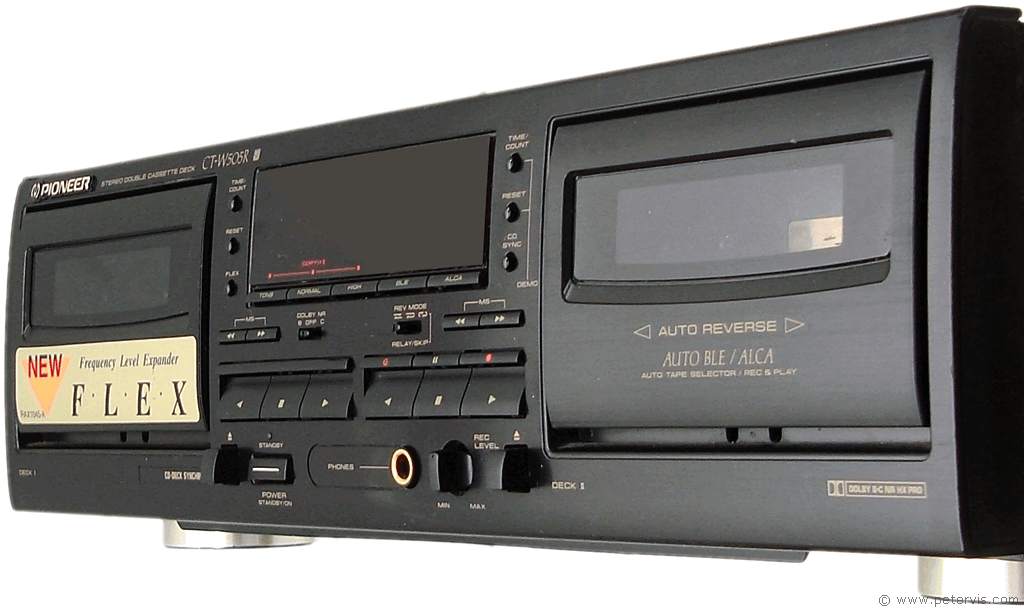

FLEX is an interesting engineering development for tapes that many hi-fi enthusiasts debate over because some like it and some do not. If you have never experienced this technology, then it might be worth getting to see for yourself. I thought the electronic engineering and build was very good and as expected from Pioneer. Inside there is a large circuit board that takes up almost all of the space. The component quality was good, and in this design they use the CXA1115BP playback equalization IC manufactured by the Sony Corporation. The tape transport mechanisms are good quality as well, with dedicated servo motors and solenoids. Each mechanism has auto-reverse facility, and therefore dual capstan/flywheels. Here are some of the features of this deck.
- Automatic Reverse
- Dolby HX PRO system
- Dolby B/C Noise Reduction
- Music search ±15 selections
- Synchronized copy start
- High speed and normal speed dubbing
- Relay playback/blank skip
- CD to Deck recording SYNCHRO capability
- Peak Level Meters with Peak Hold
- Automatic space recording mute
- Automatic tape selector
- System remote control optionally available
- 2-mode electronic 4-digit twin-tape counters
- Headphone Jack
- Tape Duplication Noise Suppressor (TDNS)
- Automatic Level Control with Tape Analysis
- AUTO BLE system
- Last Memory
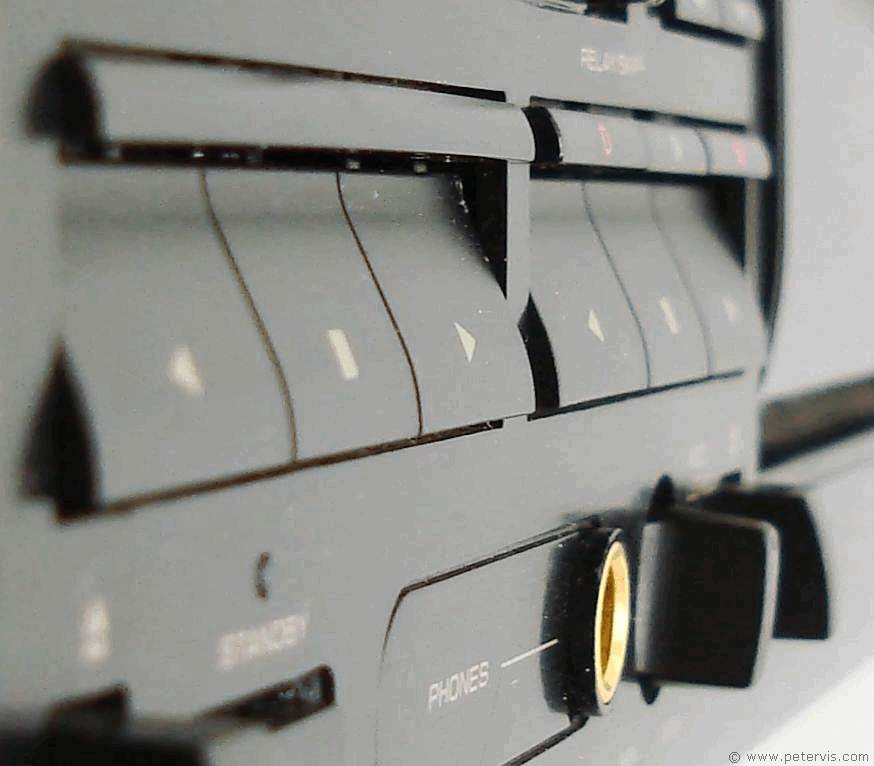
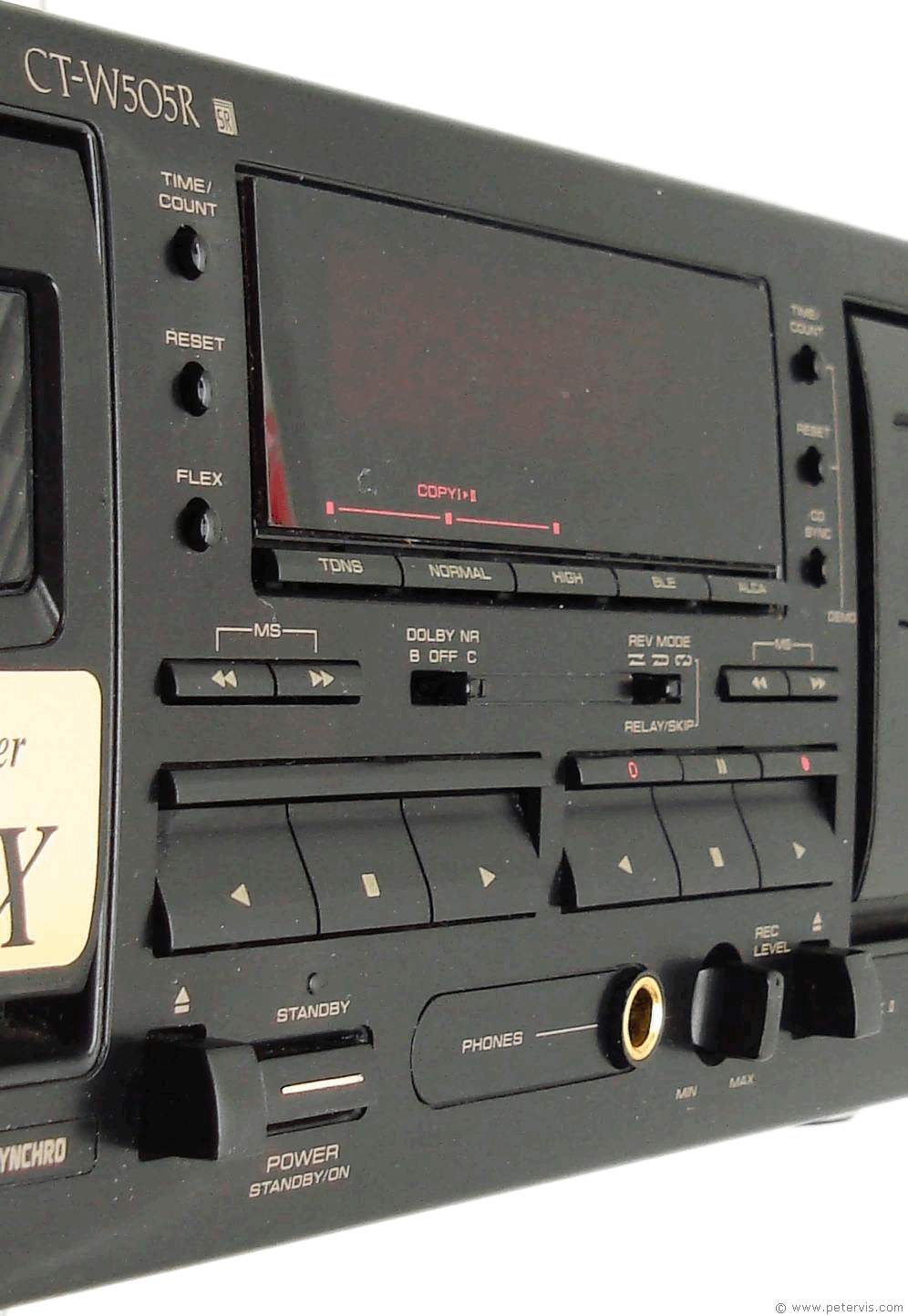
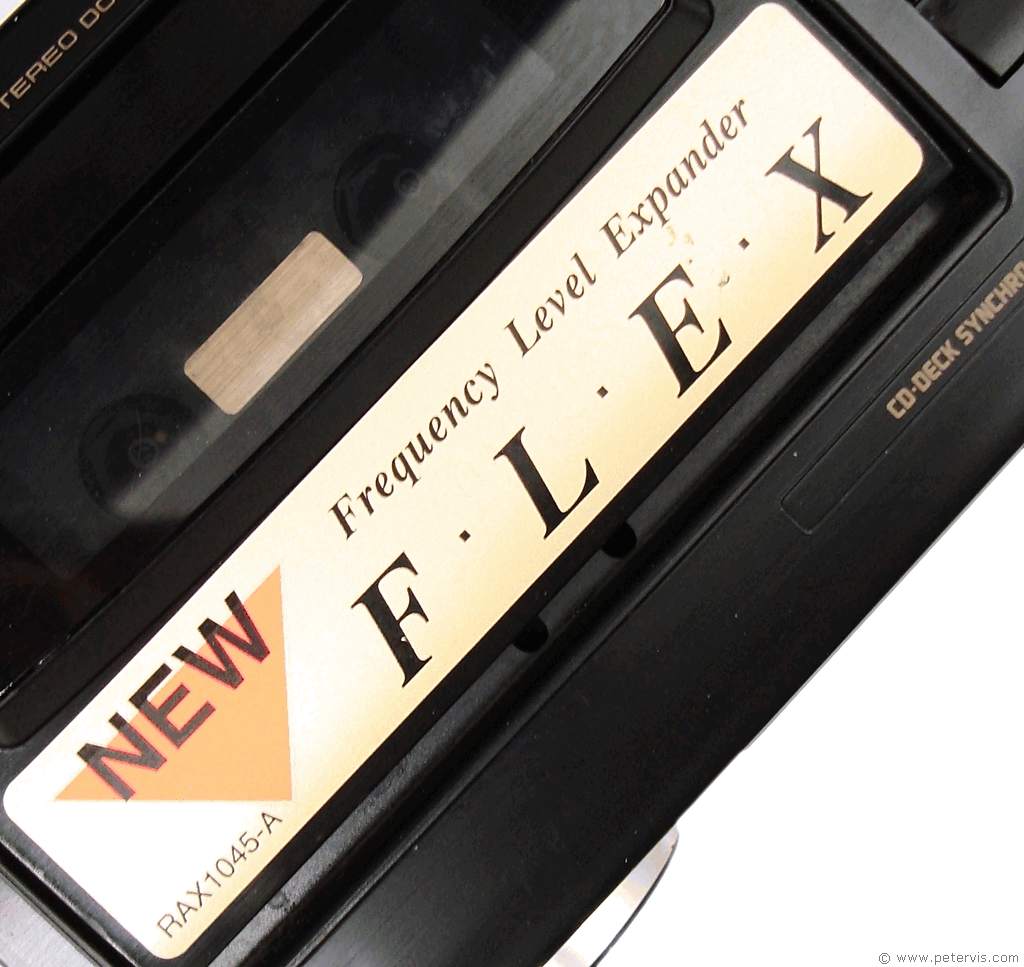
According to the service manual, frequency Level Expander (FLEX) is a system that automatically compensates high and low frequency level balance (above 1 kHz) based on the 1/f curve during playback. The 1/f curve shows that when the frequency doubles, the sound energy drops to approximately half. This signature is used by the decks computer system to determine when high frequency will require boosting. Hence, its purpose is to improve high-frequency reproduction in the 10 kHz range by 12 dB. It does this by comparing the playback sound with the 1/f curve, and when the sound does not match the curve, it engages the compensation, otherwise disables it.
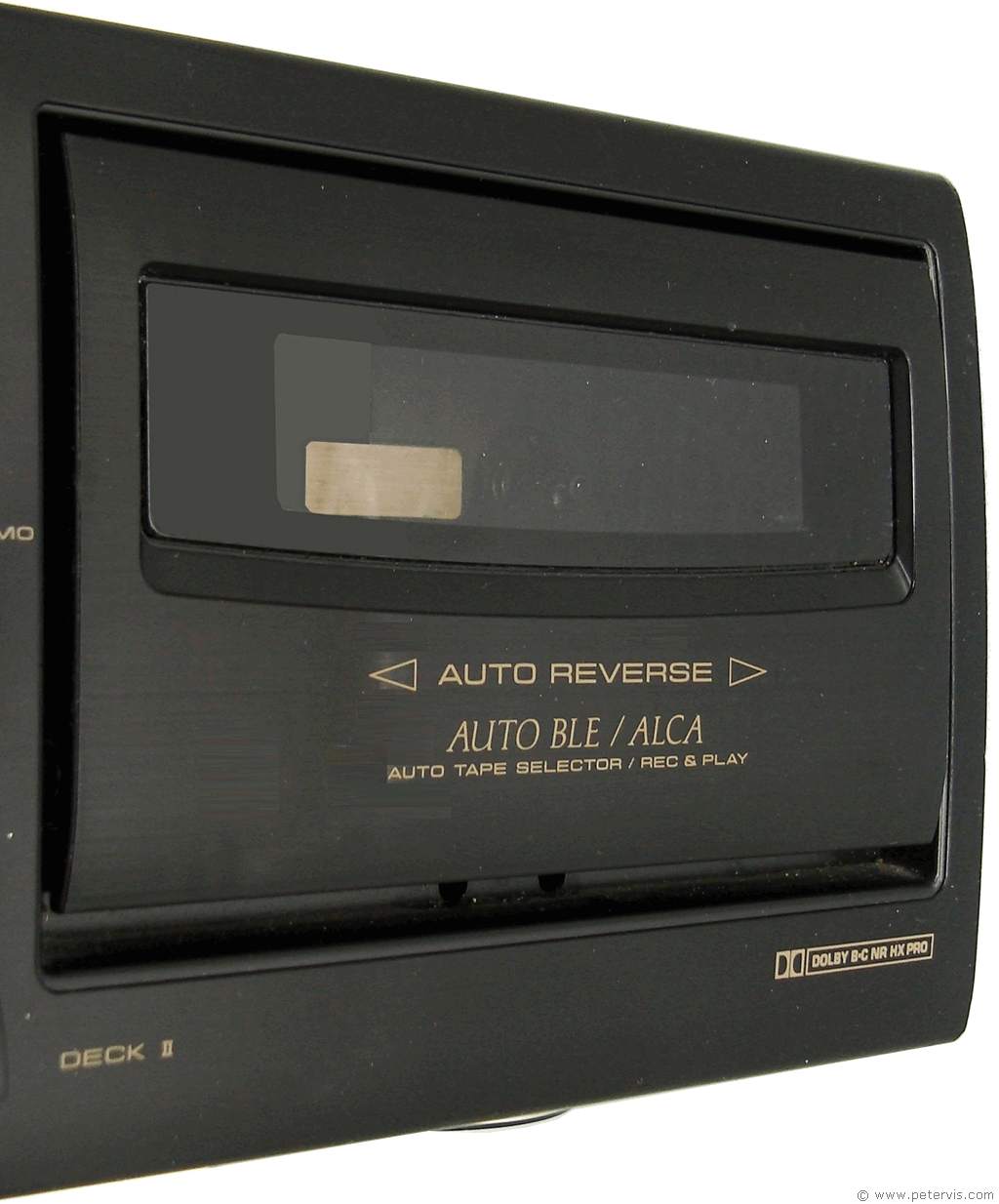
The Automatic Level Control with tape Analysis (ALCA) is a system that analyses each tape to determine the optimum recording level. It does this by recording a test signal on a tape and then comparing the playback with the original signal. The microcomputer then analyses the difference between the two signals to determine the initial and peak recording levels.
The automatic bias level equalizer (BLE) is a special microprocessor circuit that automatically sets the optimum bias level and equalizer characteristics for each tape. This technology enables the user to use the tape to its maximum possible capability by setting optimum recording levels.
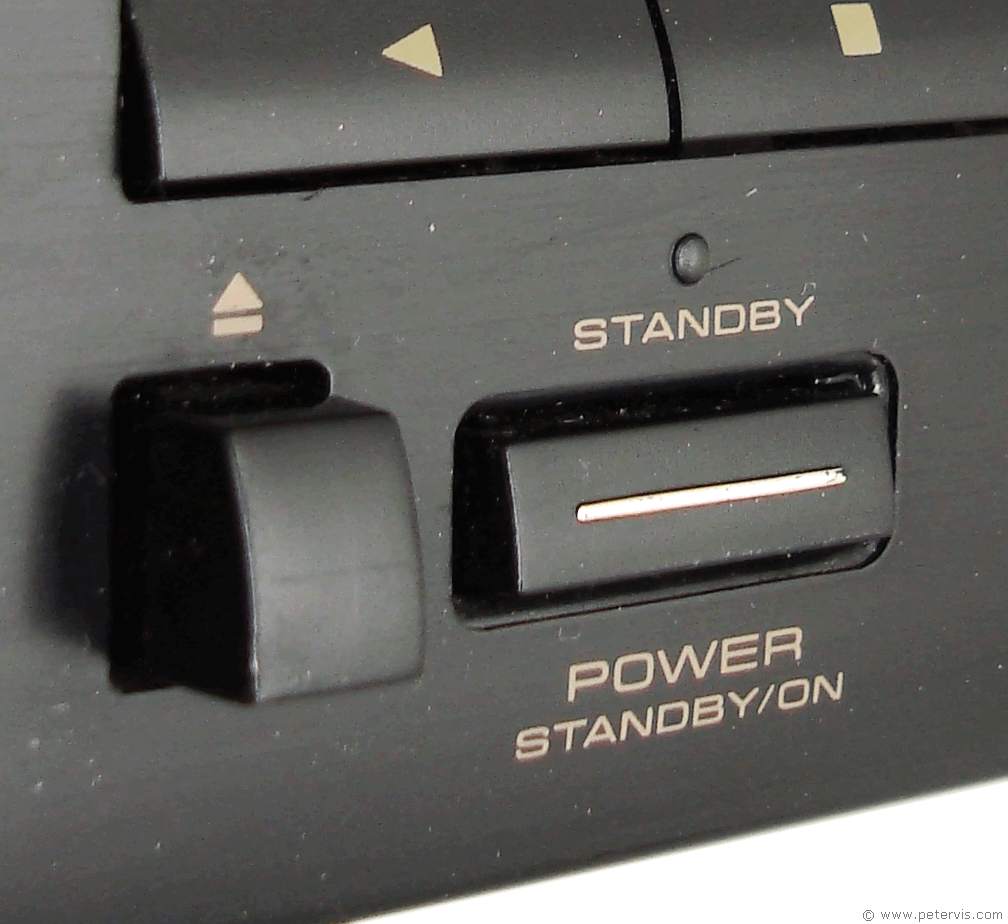
Price/eBay
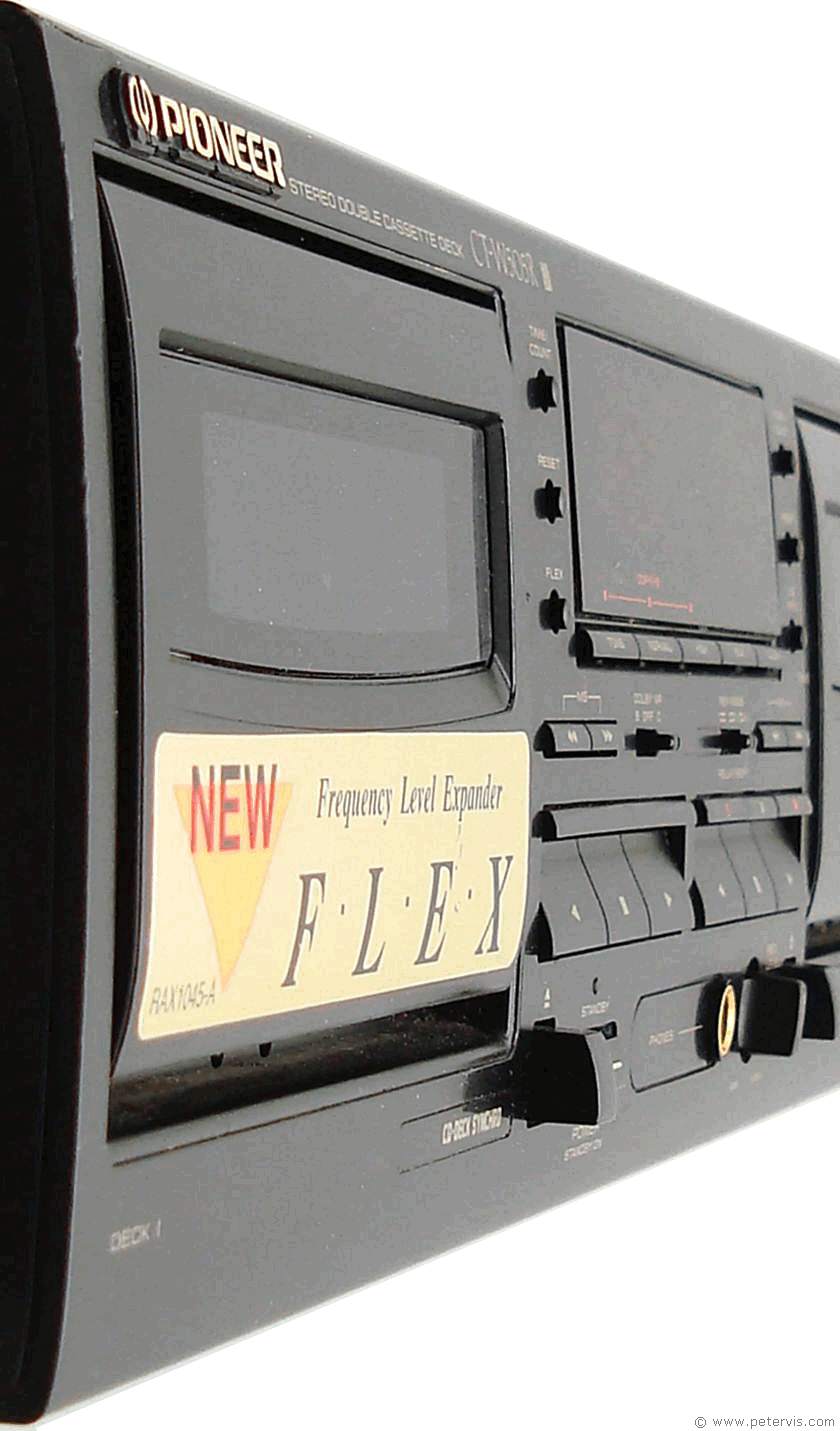
These units are usually for sale on eBay and the price can vary according to the condition. This unit has flat belts that are expensive to source and therefore a broken unit that needs a full service will not be worth much. However a unit in good working order can sell for approximately fifty pounds depending upon the day. A unit in mint condition in its original box and packaging could fetch over one hundred pounds sometimes.
Some hi-fi enthusiasts like the FLEX system, whilst others beg to differ. Hence the price can vary drastically depending upon the day. I was lucky to get this unit for ten pounds as it was totally broken and in a right state. During servicing I took it apart for cleaning/repairing and in the following pages of this article you can see the inside electronic engineering.
This Article Continues...
Pioneer CT-W505RInside View
Heads
Flywheels
Drive Belt
Main PCB
PCB Track Side
Chipset
VFD Panel
Motor
Transport Mechanism
Pinch Rollers
Program Wheel
Sensors
Removing Doors
Power Supply
Back Sockets
